Kea Turner
Attention Mechanism based Cognition-level Scene Understanding
Apr 19, 2022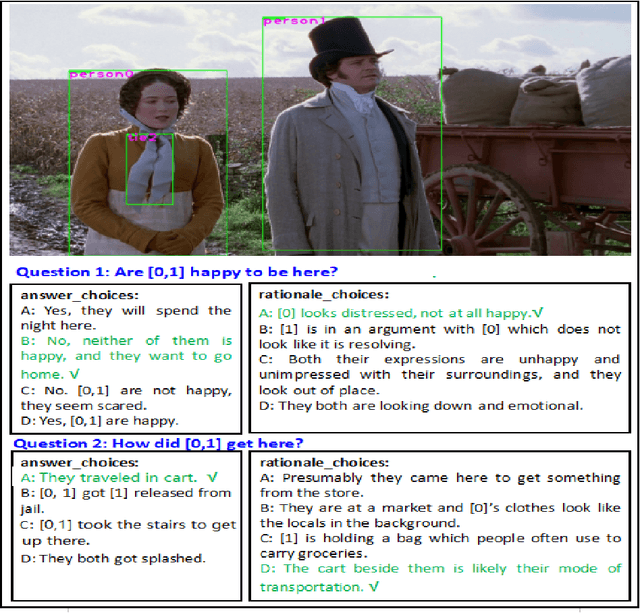
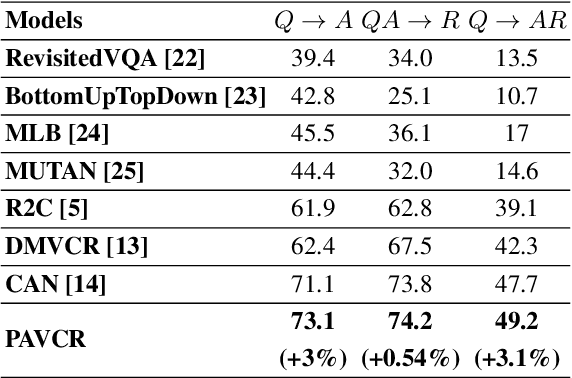
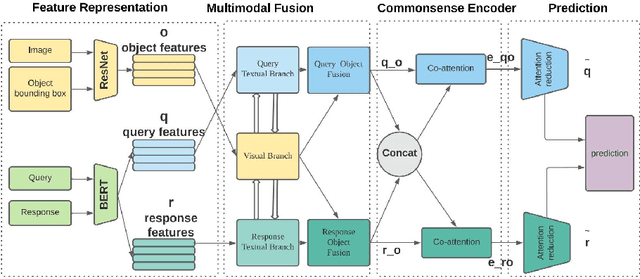

Abstract:Given a question-image input, the Visual Commonsense Reasoning (VCR) model can predict an answer with the corresponding rationale, which requires inference ability from the real world. The VCR task, which calls for exploiting the multi-source information as well as learning different levels of understanding and extensive commonsense knowledge, is a cognition-level scene understanding task. The VCR task has aroused researchers' interest due to its wide range of applications, including visual question answering, automated vehicle systems, and clinical decision support. Previous approaches to solving the VCR task generally rely on pre-training or exploiting memory with long dependency relationship encoded models. However, these approaches suffer from a lack of generalizability and losing information in long sequences. In this paper, we propose a parallel attention-based cognitive VCR network PAVCR, which fuses visual-textual information efficiently and encodes semantic information in parallel to enable the model to capture rich information for cognition-level inference. Extensive experiments show that the proposed model yields significant improvements over existing methods on the benchmark VCR dataset. Moreover, the proposed model provides intuitive interpretation into visual commonsense reasoning.
Interpretable Visual Understanding with Cognitive Attention Network
Aug 14, 2021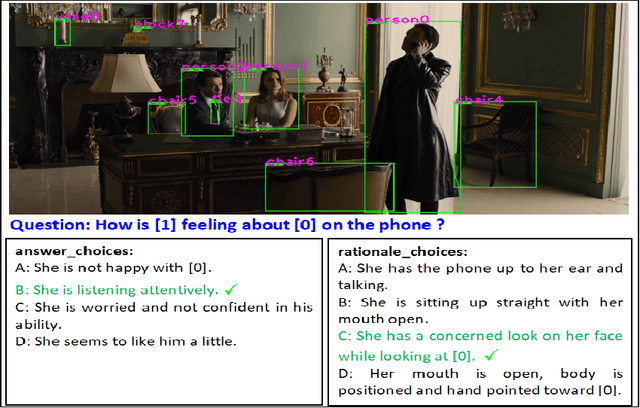

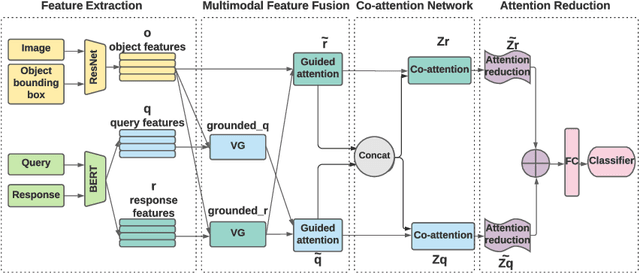

Abstract:While image understanding on recognition-level has achieved remarkable advancements, reliable visual scene understanding requires comprehensive image understanding on recognition-level but also cognition-level, which calls for exploiting the multi-source information as well as learning different levels of understanding and extensive commonsense knowledge. In this paper, we propose a novel Cognitive Attention Network (CAN) for visual commonsense reasoning to achieve interpretable visual understanding. Specifically, we first introduce an image-text fusion module to fuse information from images and text collectively. Second, a novel inference module is designed to encode commonsense among image, query and response. Extensive experiments on large-scale Visual Commonsense Reasoning (VCR) benchmark dataset demonstrate the effectiveness of our approach. The implementation is publicly available at https://github.com/tanjatang/CAN
 Add to Chrome
Add to Chrome Add to Firefox
Add to Firefox Add to Edge
Add to Edge